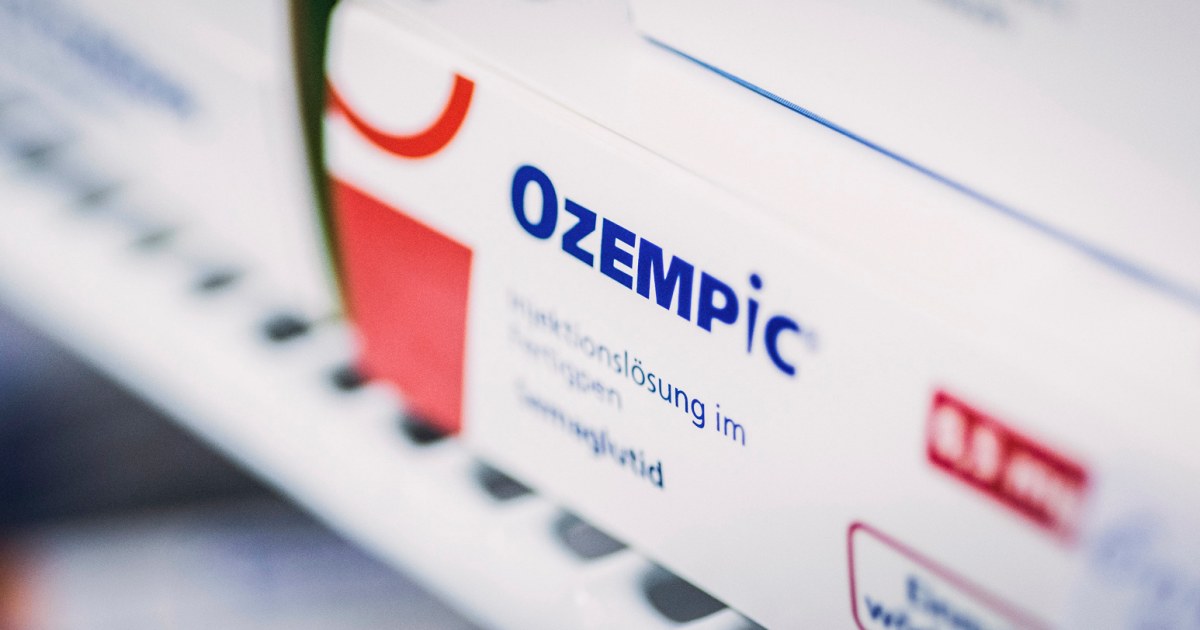Ozempic Supply Chain Contamination: Unveiling the Risks & Impacts
Editor's Note: Reports of Ozempic supply chain contamination have raised serious concerns. This article explores the implications and what it means for patients.
Why It Matters: The Ozempic supply chain contamination issue is critical because it impacts patient safety and access to vital medication. This review delves into the potential sources of contamination, the regulatory response, and the broader implications for pharmaceutical supply chain security. We'll examine related terms like pharmaceutical contamination, drug safety, supply chain integrity, and GLP-1 receptor agonists.
| Key Takeaways of Ozempic Supply Chain Contamination | |---|---| | Patient Safety: Primary concern due to potential adverse effects from contaminated medication. | | Supply Chain Vulnerabilities: Highlights weaknesses in the pharmaceutical distribution network. | | Regulatory Scrutiny: Increased oversight and potential for stricter regulations. | | Reputational Damage: Negative impact on the manufacturer's and related parties' image. | | Economic Impacts: Potential for shortages, price increases, and litigation. |
Ozempic Supply Chain Contamination
Introduction: The integrity of the Ozempic supply chain is paramount given its widespread use in managing type 2 diabetes and obesity. Recent reports of contamination necessitate a thorough examination of the potential sources, consequences, and preventative measures.
Key Aspects: The key aspects involve identifying the source of contamination, the extent of the problem, the regulatory response, and the long-term implications for the pharmaceutical industry. Concerns also exist regarding counterfeit medications entering the supply chain, potentially exacerbating the issue.
Contamination Sources and Pathways
Introduction: Understanding the potential sources of contamination is crucial to preventing future incidents. This section examines various pathways, including manufacturing flaws, transportation issues, and storage conditions.
Facets:
- Manufacturing Defects: Contamination could originate from inadequately cleaned equipment, substandard raw materials, or lapses in Good Manufacturing Practices (GMP).
- Transportation and Storage: Temperature fluctuations, improper handling, and inadequate security during transportation and storage can compromise medication integrity.
- Counterfeit Drugs: The presence of counterfeit Ozempic in the supply chain poses a significant threat, as these products are often produced without quality control and may contain harmful substances.
- Risks: The risks associated with contamination include adverse drug reactions, treatment failures, and potential long-term health consequences for patients.
- Mitigation: Stringent quality control measures at every stage of the supply chain, robust security protocols, and improved traceability are vital mitigation strategies.
- Impacts: The impacts of contamination extend beyond individual patients to include healthcare systems, regulatory agencies, and the public's trust in the pharmaceutical industry.
The Regulatory Response and its Implications
Introduction: Regulatory bodies play a crucial role in overseeing drug safety and supply chain integrity. This section examines the actions taken by relevant authorities in response to the contamination reports.
Further Analysis: The regulatory response may involve investigations, product recalls, and updates to existing guidelines. This could lead to stricter regulations, enhanced monitoring, and increased penalties for non-compliance.
Closing: The regulatory response sets a precedent for future incidents and will influence the pharmaceutical industry's practices and investment in supply chain security. Furthermore, this response highlights the need for a globally coordinated approach to drug safety and supply chain management.
| Potential Impacts of Ozempic Supply Chain Contamination | |---|---| | Increased Healthcare Costs: Due to increased testing, recalls, and potential litigation. | | Patient Morbidity/Mortality: Resulting from adverse events related to contaminated medication. | | Regulatory Changes: Leading to stricter manufacturing and distribution standards. | | Public Trust Erosion: Reduced confidence in the pharmaceutical industry and its regulatory oversight. | | Supply Shortages: Causing delays in treatment and potentially impacting patient outcomes. |
FAQ
Introduction: This section addresses frequently asked questions regarding the Ozempic supply chain contamination.
Questions:
-
Q: What are the symptoms of taking contaminated Ozempic? A: Symptoms vary depending on the contaminant but can include nausea, vomiting, allergic reactions, or more serious effects.
-
Q: How widespread is the contamination? A: The extent of contamination is still under investigation.
-
Q: What steps can I take if I suspect I have contaminated Ozempic? A: Contact your doctor immediately and report it to the relevant regulatory authorities.
-
Q: Will there be a recall? A: A recall may occur depending on the investigation's findings.
-
Q: What is being done to prevent future contamination? A: Enhanced quality control, improved supply chain security, and stricter regulations are being implemented.
-
Q: What are my legal options if I have been harmed by contaminated Ozempic? A: Consult with a legal professional to explore potential legal recourse.
Summary: The FAQ section clarifies common concerns and provides guidance for patients and healthcare professionals.
Tips for Ensuring Safe Ozempic Use
Introduction: Proactive measures can help mitigate the risks associated with medication safety.
Tips:
- Source Medication Carefully: Purchase Ozempic only from reputable pharmacies.
- Check for Tampering: Inspect the packaging for signs of tampering before using the medication.
- Store Properly: Follow storage instructions to maintain medication efficacy and safety.
- Report Suspicions: Report any concerns about medication quality or suspected contamination to your doctor and relevant authorities.
- Stay Informed: Monitor news and updates from regulatory agencies regarding medication safety.
- Register for Medication Alerts: Sign up for alerts from your pharmacy or healthcare provider to receive updates about medication recalls or safety concerns.
Summary: These tips aim to empower patients to make informed decisions about their medication and to proactively protect their health.
Summary of Ozempic Supply Chain Contamination
Resumen: This article explored the serious issue of Ozempic supply chain contamination, examining its potential sources, impacts, and the necessary responses from regulatory bodies and the pharmaceutical industry. The investigation into the extent of contamination is ongoing, highlighting the importance of robust quality control and supply chain security measures.
Mensaje de Cierre: The Ozempic contamination incident underscores the fragility of pharmaceutical supply chains and necessitates a collective effort to enhance security, transparency, and patient safety. Continued vigilance and proactive measures are crucial to safeguarding the integrity of the medication supply chain.

